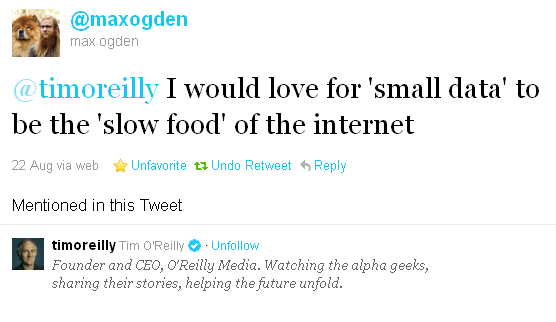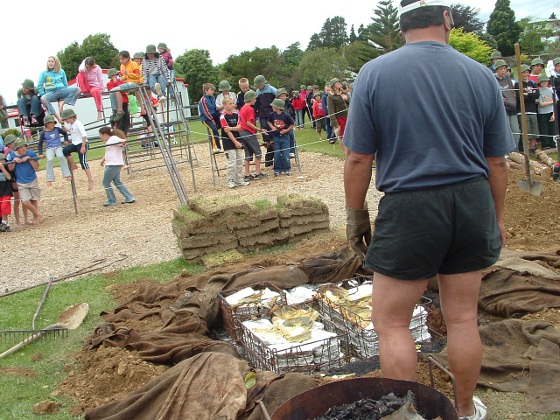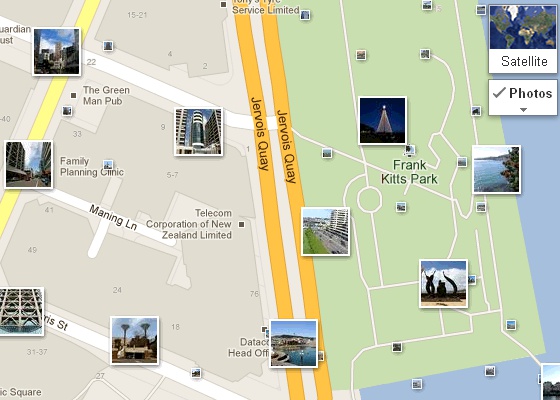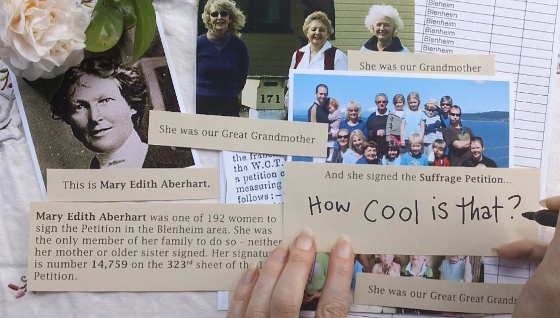Slow food, small data
Posted on 13 December 2011 by Chris
I recently spoke at the New Zealand National Digital Forum (view on Slideshare). This blog post covers some of the things I discussed.
In August, Max Ogden, an American developer and open web advocate, tweeted this: "I would love for 'small data' to be the 'slow food' of the internet".

At the time I thought, "Right on. That’s a really interesting idea." Then I did what most of us do on Twitter when we see something poignant. I re-tweeted it, I even favourited it … and then I forgot all about it. A month later I watched Candy Elsmore's video entry to Mix & Mash, "A Grand Mother". The tweet and the remix seemed related somehow.
As I watched Elsmore's video, Ogden's tweet began making a strange sort of sense. In the context of DigitalNZ, I began thinking that small data might refer to intimate, hand-picked collections of photographs, audio, newspaper articles, and video. There are parallels between the values of the slow food movement and the acts of creating, curating and sharing personal datasets. I am not sure that this is what Max meant, but this is how I have come to understand the relationship between small data and slow food.
Touching history
Slow food is about preserving and promoting traditional food products, often through the formation of seed banks to preserve heirloom varieties. There are ways of preparing food that have been handed down for generations and there is something special about old varieties of fruits and vegetables that makes people want to continue growing them. To take part in these practices is to touch history. Similarly, small data is frequently motivated by the desire to hold onto and share special things from the past. We need better tools for curating, contextualising and sharing these treasures.

Hangi Revealed. Joann Ransom, 2007. Kete Horowhenua. CC-BY-NC-SA.
Place matters
Slow food also celebrates local cuisine within regions. It embodies a notion that place matters. Although many large datasets have a geographic dimension, their very comprehensiveness dilutes their ability to represent place. A layer of Picasa images draped over a Google map gives clues into the structure of geographic space but it is largely silent on the nature of our subjective experiences. One way to represent our understandings of place is to focus and edit. Instead of showing everything all at once, you convey a sense of place by concentrating on the small set of things that matter and weaving them together into a coherent visual narrative. If big data is a mind-boggling layer of zoomable thumbnails spread across a global interactive map, small data is a cork board pinned with photographs from our trip to Takou Bay.

DIY processing
Slow food often involves organising small-scale processing. Doing it yourself is empowering. There is just you, your tools and a vision. In an age when we angst over how to make sense of an ever-increasing deluge of data, working with a small dataset can be liberating. Candy Elsmore's remix worked with a data set so small that she could print the individual items on pieces of paper and arrange them on a table by hand. The scale of the data enabled her to devise her own methods and tools that. Working with large data in unconventional ways requires specialist technical knowledge; small data is democratic.

None of this is to imply that we should turn our backs on big data. DigitalNZ currently indexes 27 million items and that number is growing by the day. Instead consider this a gentle reminder that we should enable people to work with the small and intimate alongside the large and comprehensive. Big and small data require different approaches. We should make sure that we collectively providing tools that can support both.
Comments
Comments have been closed for this post
We love the small stories idea Chris! We're encouraging people to do a similar thing with our My Gallery function - http://christchurchartgallery.org.nz/mygallery/ The idea is to let people use our collection to tell stories or create sets that mean something to them.
--Dave • 2011-12-13 00:00:00 UTC
Great! I was thrilled when you approached me at NDF and filled me in on your new personal gallery tool. I think it's a great piece of work and it is super fun to play with.
--Chris • 2011-12-13 00:00:00 UTC
We've turned off comments here, but we'd still love to know your thoughts. Visit us on our Facebook Page @digitalnz or on Twitter @DigitalNZ to share any ideas or musings with the DigitalNZ team.